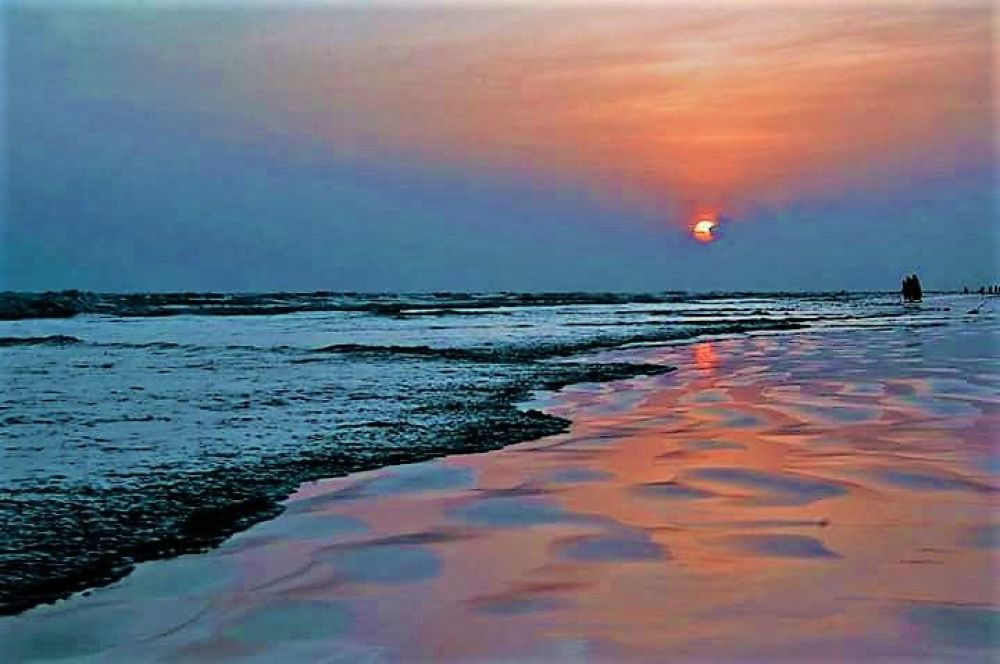

Kuakata Sea Beach, located in the southwestern part of Bangladesh, is known for its panoramic sea beach and picturesque beauty. Named after the word 'Kua'- the Bengali term for 'Well' which was dug on the seashore by the early Rakhine settlers in quest of collecting drinking water, who landed on the coastline of Kuakata centuries ago. The beach is often referred to as the "Daughter of the Sea," and is acclaimed for its unique ability to offer a full view of both sunrise and sunset over the Bay of Bengal.
The history of tourism in Kuakata is relatively recent compared to other historic sites of Bangladesh. Its journey as a tourist destination began to materialize seriously in the 20th century. While the local fishermen and the Rakhine community had been enjoying the natural beauty and resources for a long time, it wasn't until the 1970s and '80s that Kuakata started gaining popularity among the general populace of the country.
In the late 1980s, the Bangladesh government recognized the potential of Kuakata as a tourist haven and started developing basic infrastructure to promote it. The establishment of transportation lines, construction of local resorts, restaurants, and the implementation of conservation efforts helped Kuakata emerge as a sought-after beach destination for both local and international tourists.
Tourism activity received a further boost in the 1990s and early 2000s, with an increasing number of visitors arriving to experience its serene environment and cultural tapestry. The Rakhine festivals and local craft also became a draw for many who were curious about the diverse cultural heritage of Bangladesh.
In recent years, the trend in tourism at Kuakata has shifted towards more sustainable and eco-friendly practices. Efforts are being made to preserve the natural beauty of the beach by regulating construction and waste management more rigorously. Furthermore, tourism providers are focusing on offering experiences that are culturally respectful and environmentally conscious.
Community-led tourism is on the rise, with initiatives that allow visitors to engage directly with local communities, learning about their lifestyles, crafts, and traditions. The introduction of bike rentals, eco-cottages, and guided tours that support local economies are a few examples of how tourism trends are evolving in Kuakata.
Adventure and experiential travel have also become popular, with tourists seeking out activities such as water sports, deep-sea fishing, and even exploring the nearby mangrove forests of the Sundarbans, a UNESCO World Heritage site.
Finally, with the advent of social media, a new trend is that of digital nomadism. Young travelers are increasingly drawn to Kuakata for the opportunity to work remotely while enjoying the beach's tranquility. Connectivity and amenities have improved to accommodate this new wave of tourism, cultivating Kuakata's image as a destination that marries relaxation with productivity.
As Kuakata continues to develop, it remains a jewel in Bangladesh's tourism portfolio, offering visitors an experience that is as enriching and beautiful as it is tranquil.